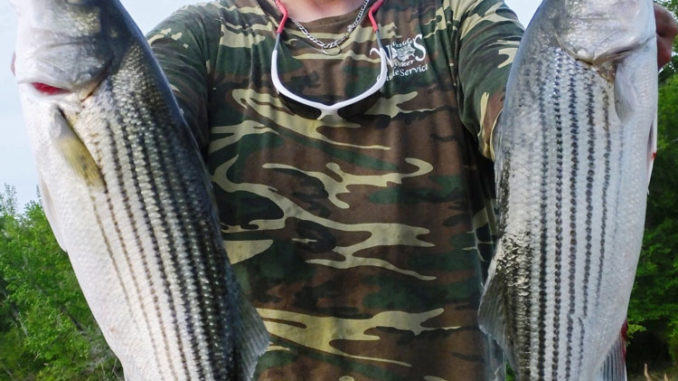
The striped bass fishery at South Carolina’s Lake Wateree has rebounded, and it’s time for anglers to take advantage of great fishing — even during the summer.
South Carolina’s Lake Wateree has been a put-and-take striper fishery since the 1980s, and for most of that time, it has been a prime striped bass destination. But fishing success moderated for several years, but over the past several years the lake has again revived into a strong striper fishery.
Justin Whiteside, a striper and catfish guide, said the period from summer into the fall can provide exceptional striper fishing at Wateree. He credits the revitalization of the fishery to a larger number of stripers being consistently stocked and a healthy forge base.
“The lake is full of stripers again, and Lake Wateree has an excellent forage base of both threadfin and gizzard shad to support these fish,” he said. “The fish are healthy and grow fast here.”
Whiteside said the summer months are very productive; he employs multiple techniques to catch them.
“Versatility is a key to catching stripers this time of the year,” he said. “Live bait fished vertically on down rods as well as on no-weight free lines is often exceptionally good in low-light conditions, but trolling is often my ‘go-to’ tactic for much of the bright, hot days of late-July and August.”
Whiteside said the best live baits are gizzard and threadfin shad that he catches at Wateree in a cast net.
“The plentiful forage makes the ideal live bait when fishing for stripers,” he said. “I get out before dawn and throw a 5/8-inch mesh cast net around grass banks, and any place I spot pods of baitfish. The size of the bait is crucial, and at this time of the year, I prefer shad in the 4- to 5-inch size; that’s why I use a larger mesh on my cast net. By contrast, during the winter I prefer small live baits, usually in the 3-inch class, so I use a smaller mesh net.”
With bait stowed in his aerated bait tank, Whiteside’s first effort is to find forage with stripers marked on the graph. He said the entire lake can be productive, but he often begins mid-lake and works up or down the lake based on baitfish and fish activity. He keeps one eye peeled for schooling action or bird activity to clue him to where stripers are located.
“Stripers are easily identified on the graph, so I search for schools of shad with big fish marked around and under them,” he said. “I’ll work the creek mouths, points, humps and channel ledges early. Early in the morning, forage and stripers may only be about 10 feet deep, but they both get progressively deeper as the sun gets higher.”
Whiteside uses 7½-foot striper rods with heavy baitcasting reels spooled with 17-pound line. He uses 2-ounce sinkers on his down rods to get his baits to specifics depths under the boat, and he’ll also deploy at least four live baits on free lines. Two will be directly behind the boat and two will work off planer boards to get them away from the boat. He’ll use small circle or J-hooks.
The depth of his down lines is determined by the depth fish are marked on the graph. He will lower the bait to the depth or slightly above the depth where most of the fish are marked.
“The best bite will vary daily,” he said. “Some days, both down lines and free lines produce about equally, but one tactic sometimes rules the day. I believe it’s crucial to use both and let the stripers decide. The water is typically calm during early mornings, so I use my electric motor to pull the baits. That way, when I get on active fish, I can keep the boat on the fish.”
Whiteside will pull his baits at 0.7 to 1.2 miles per hour, the exact speed is determine by experimentation and success.
When he finds a school of stripers, multiple hookups are common using live bait. When the action slows, he works the same general area for a while before moving, because stripers are often still in the area.
Once the sun begins to beat down, the baitfish and stripers retreat to deeper water — but not really deep.
“By July, we’ve got a thermocline set up in most of Lake Wateree, and that’s usually in the 20-foot or slightly deeper range,” he said. “This keeps the stripers at very fishable depths, but they often begin to scatter along the ledges and channels so I’ve developed my own trolling technique to find and catch them during mid-day.”
Whiteside trolls with umbrella rigs because he likes the idea of multiple baits in close proximity to trigger reaction strikes.
“Stripers have a ‘wolf pack’ mentality, and the umbrella rigs work great at Wateree,” he said. “I’ll vary the type of rigs, but any standard umbrella rig will work. I typically like a 3/4-ounce main umbrella rig and use 1/4-ounce jigheads with plastic trailers, with Little Fishies being one of my favorites.
“The ‘match the hatch’ is important on the trailers, and if the fish are eating 4- or 5-inch bait, I’ll match that size on the plastic trailers. I’ll primarily use chartreuse and white trailers, but I do mix it up, and blue can be effective, as is the pink and chartreuse combination. I’ll experiment and refine the color based on fish preferences for the day.”
Whiteside trolls with lead-core line to get his baits to depths where stripers will hang out during the middle of the day.
“It’s a daily pattern to determine the depth and speed stripers want the lures, so I’ll typically troll multiple rods at different depths,” he said. “I’ll also vary the speed, and when I catch the first striper, I’ll tighten up my depth and speed controls. Usually, within a short time, I’ll have a speed and depth combination that’s consistently productive that day. If the shad stay in the area, I’ll work the same area repeatedly.”
Whiteside also uses downriggers to fine-tune his depth control. With lead-core, deploying a specific length of line with speed variables, he’s able to get determine productive patterns by trial and error, but downriggers take pinpoint accuracy to the next level.
“Using downriggers I get precise depth control and can focus on the speed factor,” he said. “The 8-pound ball I use on the downrigger is picked up by my graph, so I can control the exact depth and eliminate guesswork. I still troll at different depths until I find the typically small window where stripers are holding and can target that exact depth.”
Whiteside trolls along well-defined drops and ledges along the main-river channel and some of the larger creeks, as well as over humps and points. He works the 12- to 22-foot range but said the most-productive depths vary based on time of day and cloud cover.
He said speed control is another major factor for summertime striper success.
“Speed is a key to triggering a bite; I’ll vary the speed on my trolling from 1.5 miles up to 2.5 miles per hour,’’ he said. “Some days when fish are active, the very best bite will be on the fast end of that scale. And with the schooling tendency of stripers and their ‘wolf pack’ mentality to gang-attack forage, multiple hookups are common when trolling — and often, two stripers are hooked on the same umbrella rig. Some days I’ll find stripers in a small, well-defined area, and others, I’ll troll long distances along the channel ledges and pick up occasional fish.”
Whiteside said that have a good lure retriever is very important, because hang-ups with umbrella rigs can occur.
“It’s a big investment to troll with multiple umbrella rigs, but a good lure retriever will save most of them,” he said.
Not every day is a ‘home run’ type of day, but Whiteside often has days when dozens of stripers are swung into the boat.
“We’ll have some exceptional days, of course, when we boat 30 to 40 or more stripers, but its not uncommon to catch 10 to 25 stripers during the day,” he said.
The creel limit is very generous on this put-and-take-fishery with a 10-fish daily limit and no minimum or maximum size limit.
DESTINATION INFORMATION
HOW TO GET THERE — Lake Wateree is in Kershaw, Fairfield and Lancaster counties east of I-77. Access from the south is via SC 97 to the east side of the lake. From I-77, take SSR 41 at Exit 41 to SSR 101 (River Road). From Camden, take US 521 to SSR 97. For a list public boat ramps, visit https://www2.dnr.sc.gov/ManagedLands/boatramp/boatrampsearch
WHEN TO GO — Striper fishing is good most of the year, and late July and August can produce limit catches using live bait, trolling or following schooling fish. Low-light situations are typically best for shallow water or schooling action, but with the right gear stripers can be taken in deeper water all day.
BEST TECHNIQUES — Success varies daily, but using live shad fished on down lines or free lines is an excellent choice for low- light periods, when most schooling action takes place. Deep water trolling using downriggers can be extremely effective during the mid-day hours.
FISHING INFO/GUIDES — Justin Whiteside, 803-417-0070; Jamie K’s Outdoors, Fort Lawn, 803-872-7020. See also Guides & Charters in Classifieds.
ACCOMMODATIONS — Kershaw County Chamber of Commerce, Camden, 800-968-4037; Quality Inn, Lugoff, 803-438-941, Travel Inn, Lugoff, 803-438-4961; Lake Wateree State Park (camping), 803-482-6401.
MAPS — iKingfisher Maps, 800-326-0257, www.kfmaps.com; DeLorme’s S.C. Atlas & Gazetteer, 800-561-5105, www.delorme.com; Duke Energy, www.duke-energy.com.

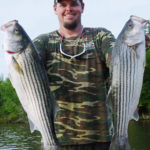
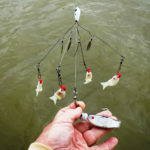
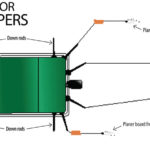
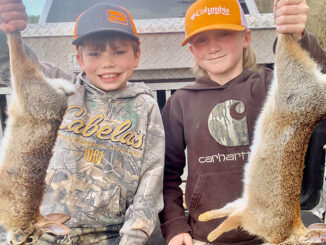
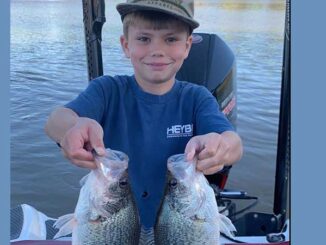
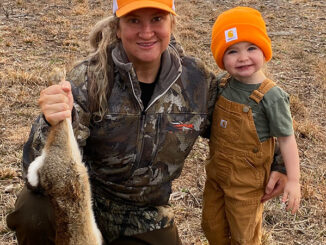

Be the first to comment